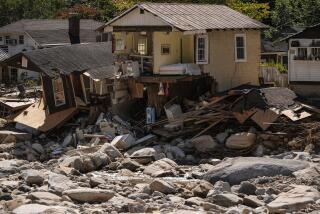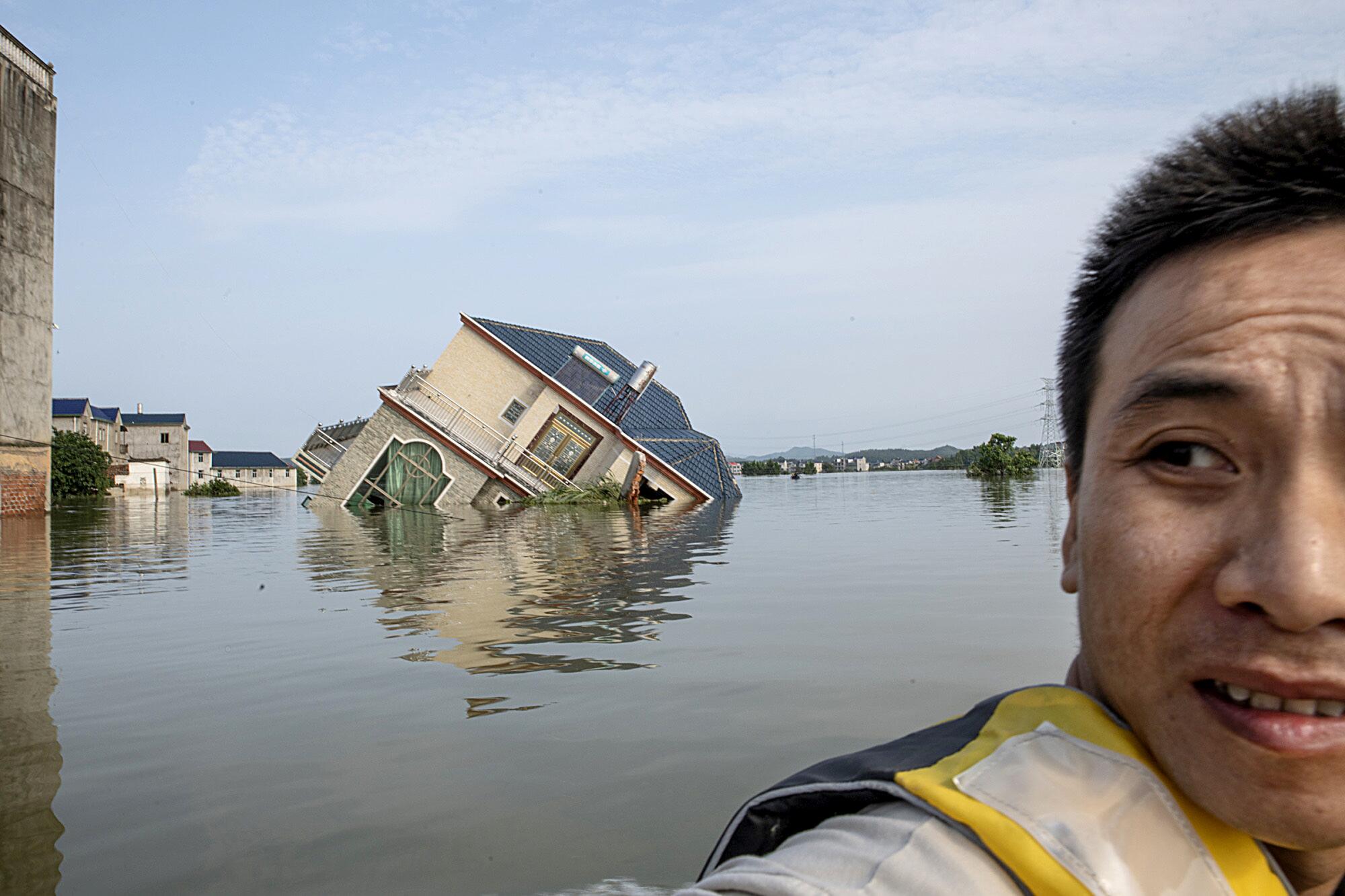
POYANG, China — The storms hit hard. The electricity went out. But the mother refused to leave. Her son kept calling as he watched the rising waters on the news. Houses were toppling into the Xi River as it burst through levees, swallowed farm fields and roared into villages.
It was the worst flood in decades, one of many that have been ravaging swaths of southern and central China since early June, forcing millions to evacuate, damaging more than 28,000 homes and leaving 141 dead or missing, according to official numbers.
The water swirled past her first floor, but Zhang Meifeng, 67, didn’t want to go. She had heard the roil of such waters before. This was the house her husband and son had spent 20 years saving to build. They were migrant workers who endured most of the year far from home, her husband a woodworker in Zhejiang province and her son a sales clerk in Hainan.
“We earn small money, eating bitterness. You make a little and save a little,” she said. Her family’s life achievement stood 3½ stories tall. It had a spiral staircase, wood furniture and a tiered chandelier. They’d spent $10,000 to build it, just finishing last year, and still had debts to pay.
“I want to stay and take care of our home,” Zhang told her son who was calling from Hainan before her cellphone battery died. She dragged the TV and other electronics upstairs one by one, crying as she went.
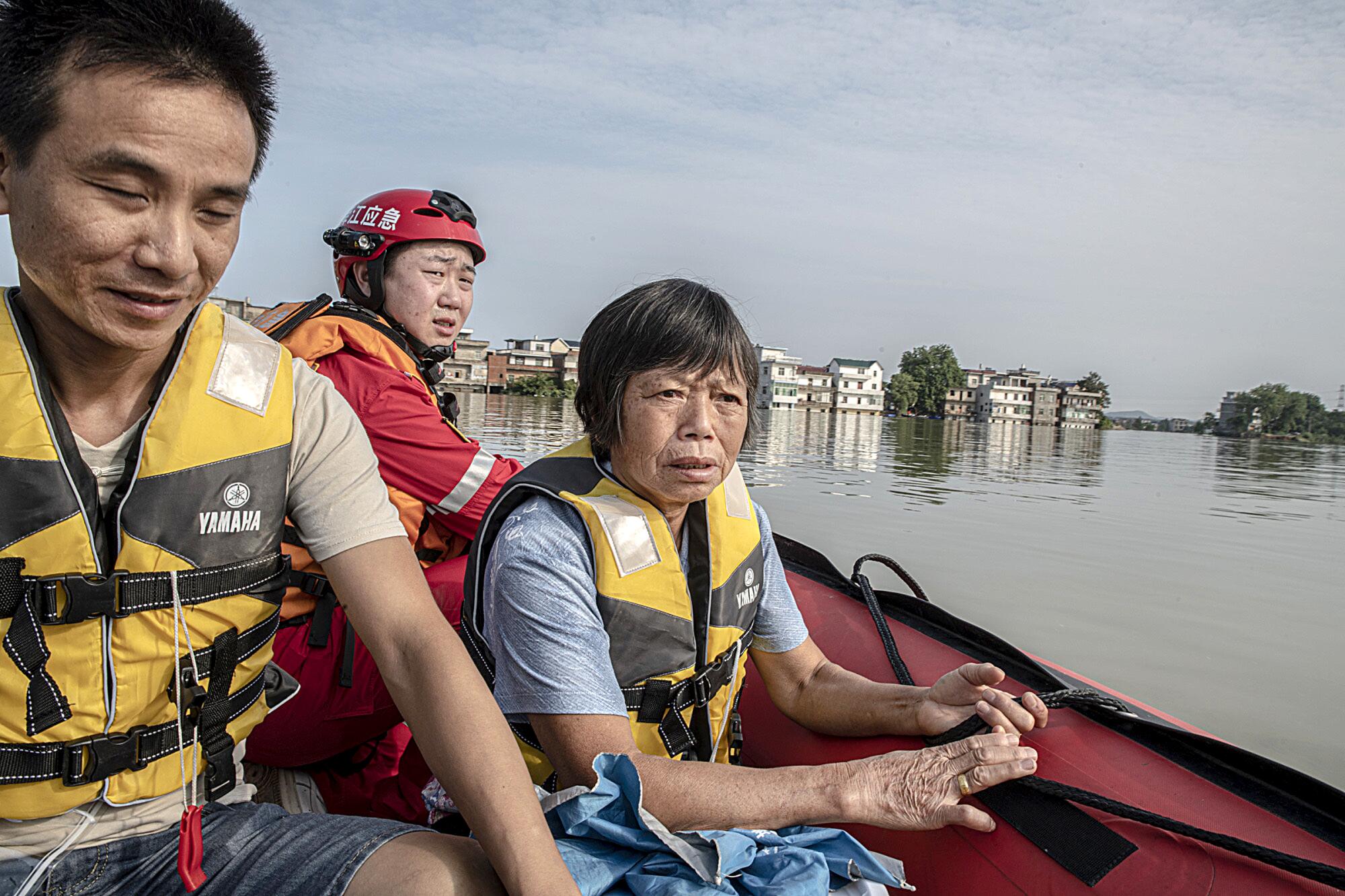
On the third day, her son-in-law came in a boat and made her go. Zhang insisted on returning days later, lugging a bucket of baozi and case of drinking water for her neighbors on a rescue boat with a volunteer team that had arrived from Ningbo. Her son-in-law came along to help move the furniture higher.
The rain had paused, and truckloads of soldiers had been dispatched to shore up dams and dikes before the next round of storms. But here in the flooded villages of Poyang county, where the fields are vast and houses are slowly realized dreams, nongovernmental organizations were the ones rescuing families.
Zhang sat with two volunteers who had day jobs as shopkeepers and tutors back in Zhejiang province. They’d come in a small team on their own time and money, with two inflatable boats.
“Duck!” they cried as the boat passed under electric wires only 2 or 3 feet above the surface. Sunlight glared off the murky water. A small snake squiggled away. The farms had turned into a sea; treetops poked out as clusters of garbage floated around them. In one spot, a house slanted into the water at a 45-degree angle.
A cat yowled somewhere, trapped, as the boat entered Zhang’s village. Zhang pointed the way, her son-in-law glancing at neighbors still standing on their balconies or rowing past on bamboo rafts, running errands between their homes and the town, as if the destruction around them only required a simple adjustment to their daily routines.
When they reached Zhang’s home, she clambered up three floors, then into a tiny attic. She tucked something into her purse. “She left a few thousand renminbi in cash behind,” her son-in-law whispered, referring to Chinese currency. “She couldn’t sleep the last few nights thinking about that.”
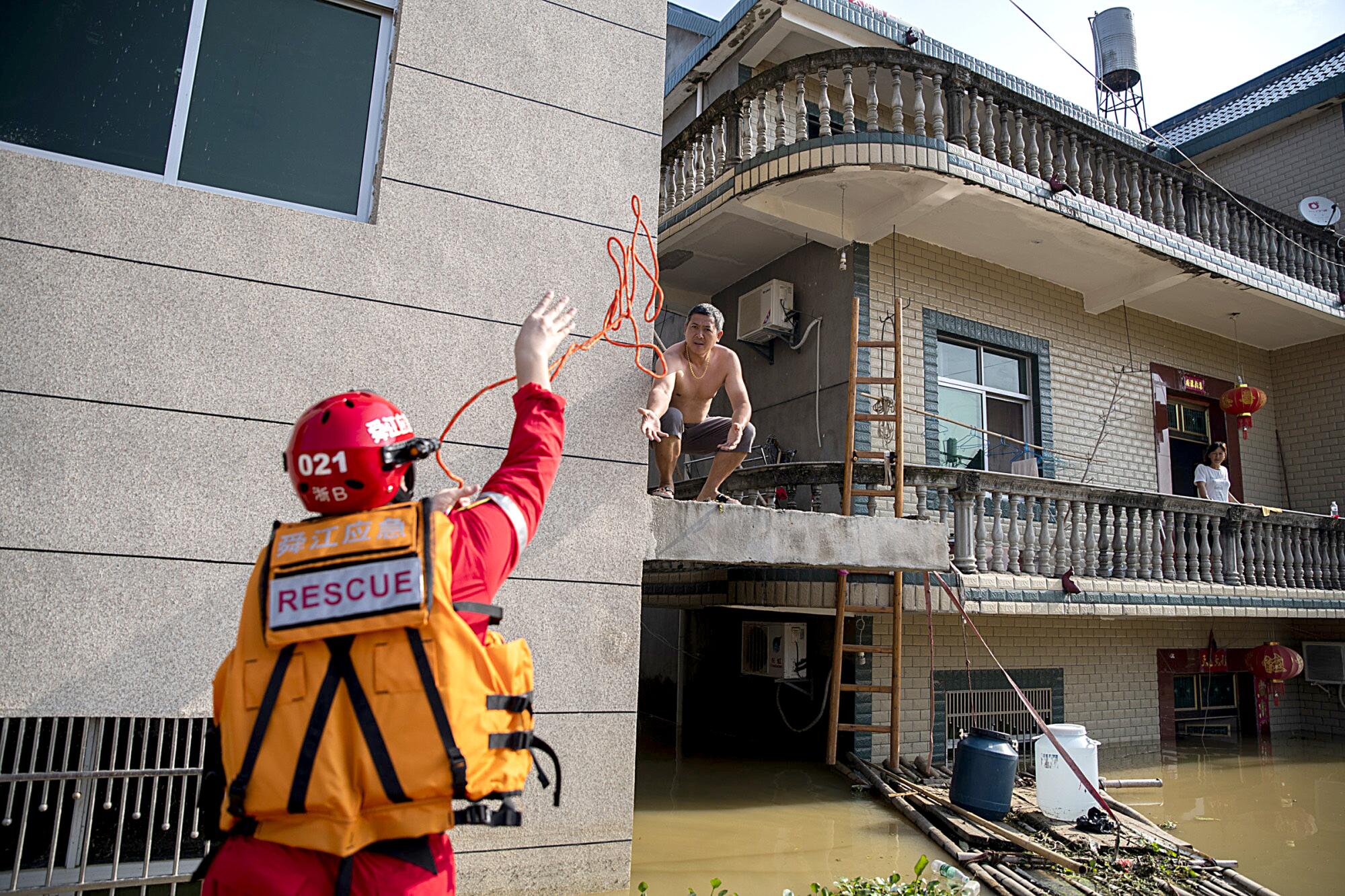
Most villagers here in rural Jiangxi province, which earlier this year had to confront the coronavirus, are either old farmers or their grandchildren. The houses are big but empty, guarded by the elderly raising children left behind by parents who labor in faraway cities and come home once a year.
When the floodwaters surged last week, many recalled 1998, the last time torrential rains fed rising rivers that tore through levees.
More than 3,000 people had died that year as the Yangtze River flooded, leaving 14 million people in its floodplains homeless. In Poyang, many more houses — made of wood at that time — had collapsed, including Zhang’s. She’d been alone with two children then, her husband working far away. Displaced villagers had sheltered under plastic tarps, their stranded cows and pigs milling about them.
China made substantial investments in flood control after 1998, especially along the Yangtze. But in smaller places like Zhang’s village in the low-lying areas around Poyang Lake — China’s largest freshwater lake, currently nearly 10 feet above warning level and on the cusp of further flooding — floodplain management is sometimes undercut by greed and incompetence.
Villagers say local officials put on a show of responsible behavior when “big leaders” come to visit, but otherwise allow shoddy construction deals. They also say that disaster relief money allotted by the central government is siphoned away by layers of corruption.
“It never reaches us commoners’ hands,” said Gao, Zhang’s son-in-law, who asked that his full name not be used.
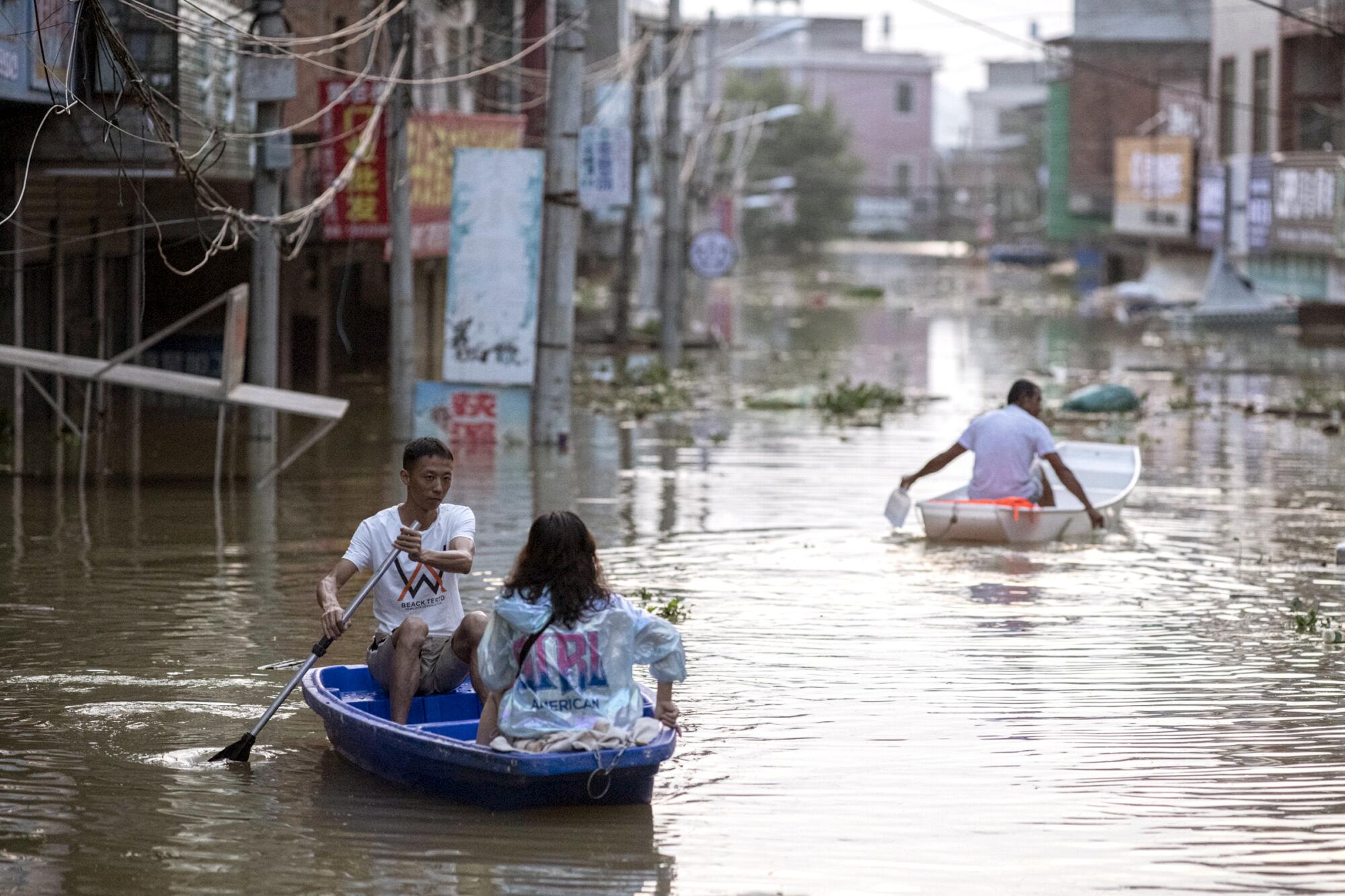
A few miles from Zhang’s village, a contract farmer surnamed Sheng spread rice seeds on a road to dry. Behind him, the road vanished into water. His 330 acres of fields were submerged around him like a muddy shawl. A broken levee that was supposed to be upgraded last year had been left half-finished.
“This problem was man-made. This levee is not supposed to break,” said Sheng, sweating beneath a brimmed hat. He led the way to the levee, pointing out the crumbly, top layer of soil, no match for the wind and the water’s inexorable force.
“It’s a tofu-dregs project,” he said, using a term popularized in China after the 2008 Sichuan earthquake, referring to poor-quality construction projects that line officials’ pockets but endanger citizens’ lives.
Nearly 1,650 acres of farmland had been flooded because of that broken levee, he said, destroying all the nearby farmers’ first crop of the year — planted early at the government’s urging because of the pandemic — along with much of the second crop and the seedlings for the third.
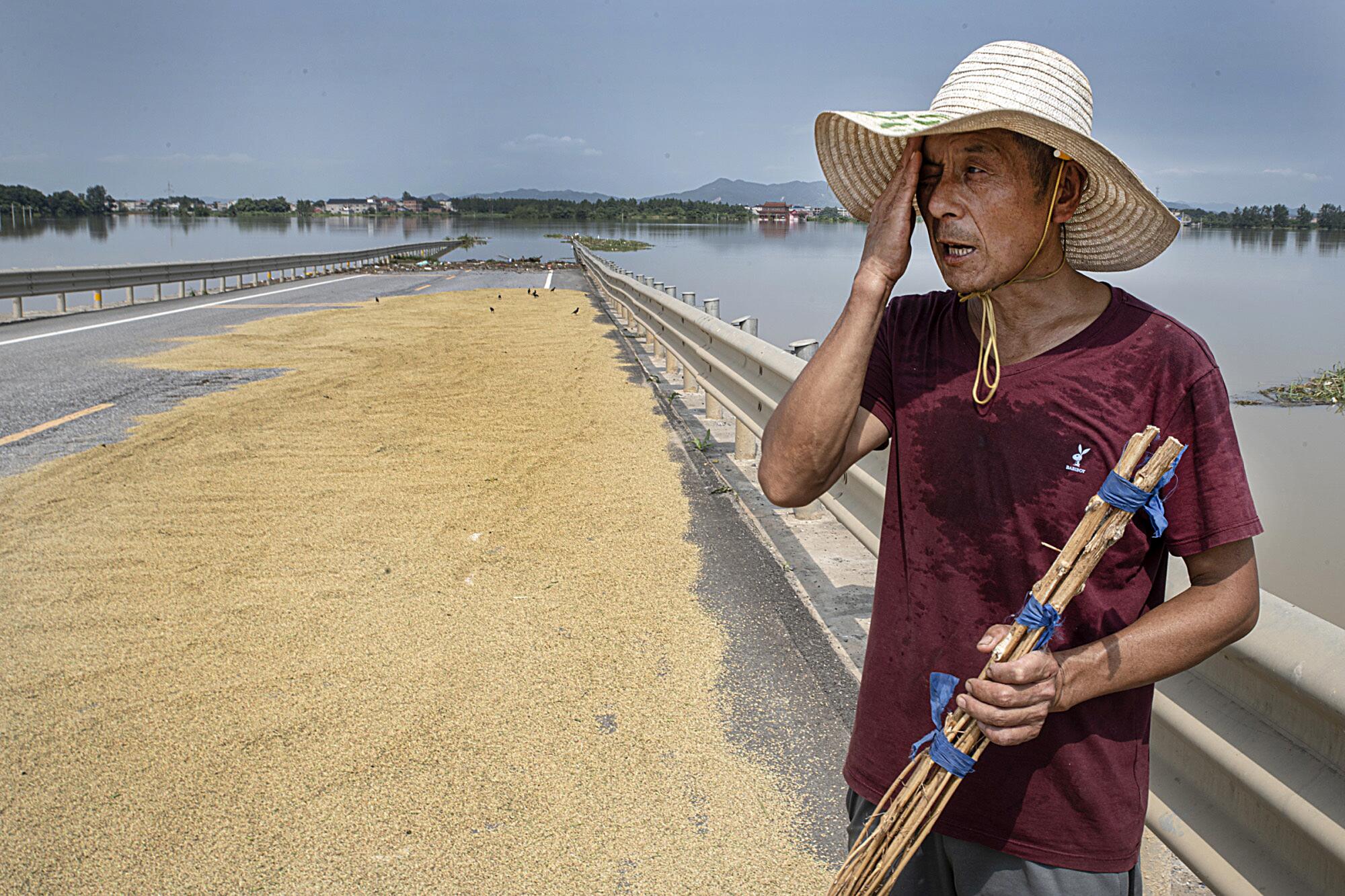
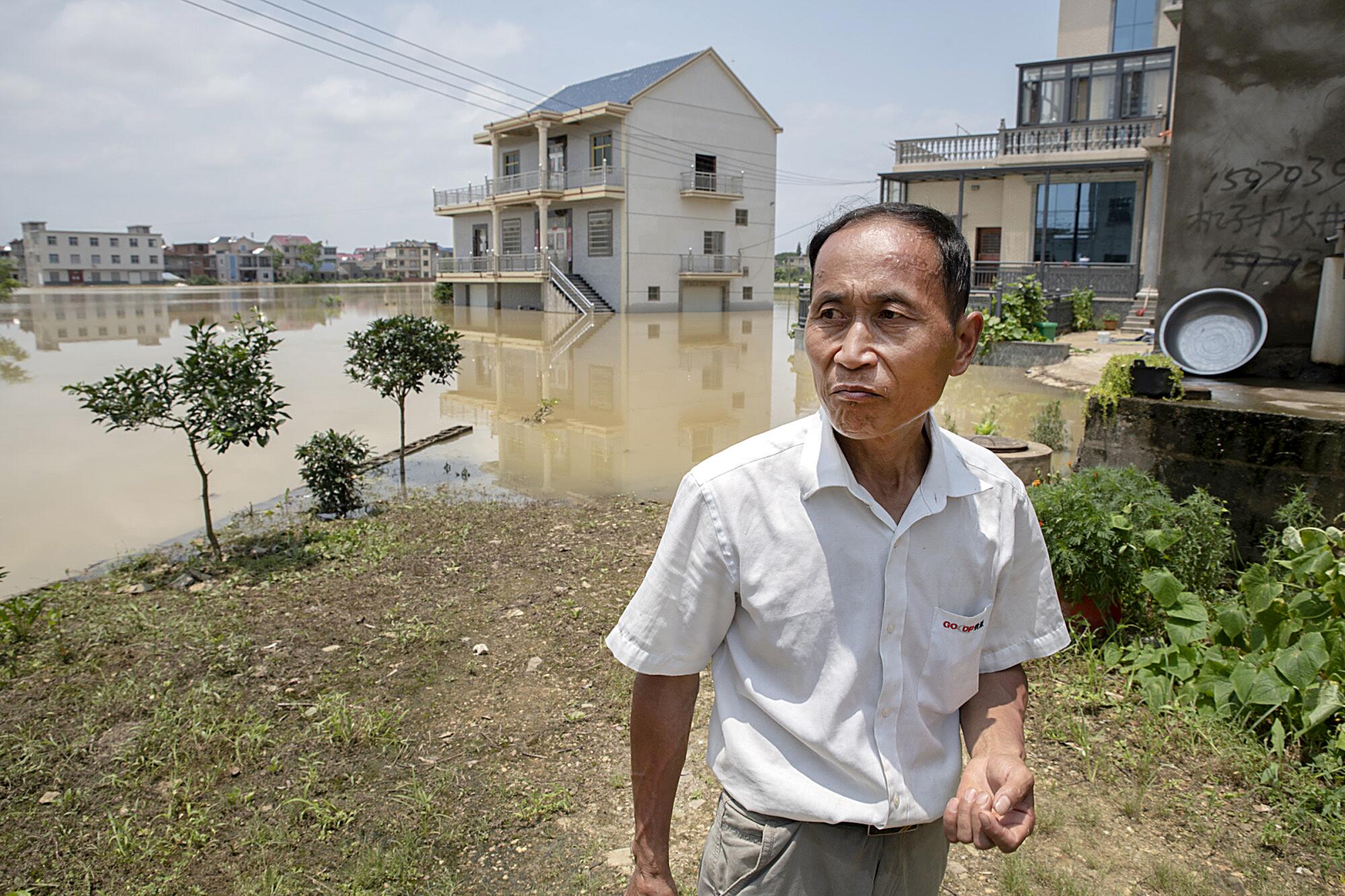
Another swath of villages had also been flooded, some of them home to those who said they’d been stranded and ignored by the local government for a week.
“It’s as if this village doesn’t even exist,” said Cheng Xuannan, 58, a resident of Chengjia village in Yinbaohu county, one of the villages left stranded. The water had receded around 40 households, rendering them an island cut off by their underwater fields.
Cheng had worked for decades in marble finishing, which employs mostly migrant workers, exposing them to fine dust that can cause lung disease and death. At his wife’s behest, he had rushed back just days before the village flooded. She was raising their 1½-year-old granddaughter alone and was terrified of being cut off by the flood.
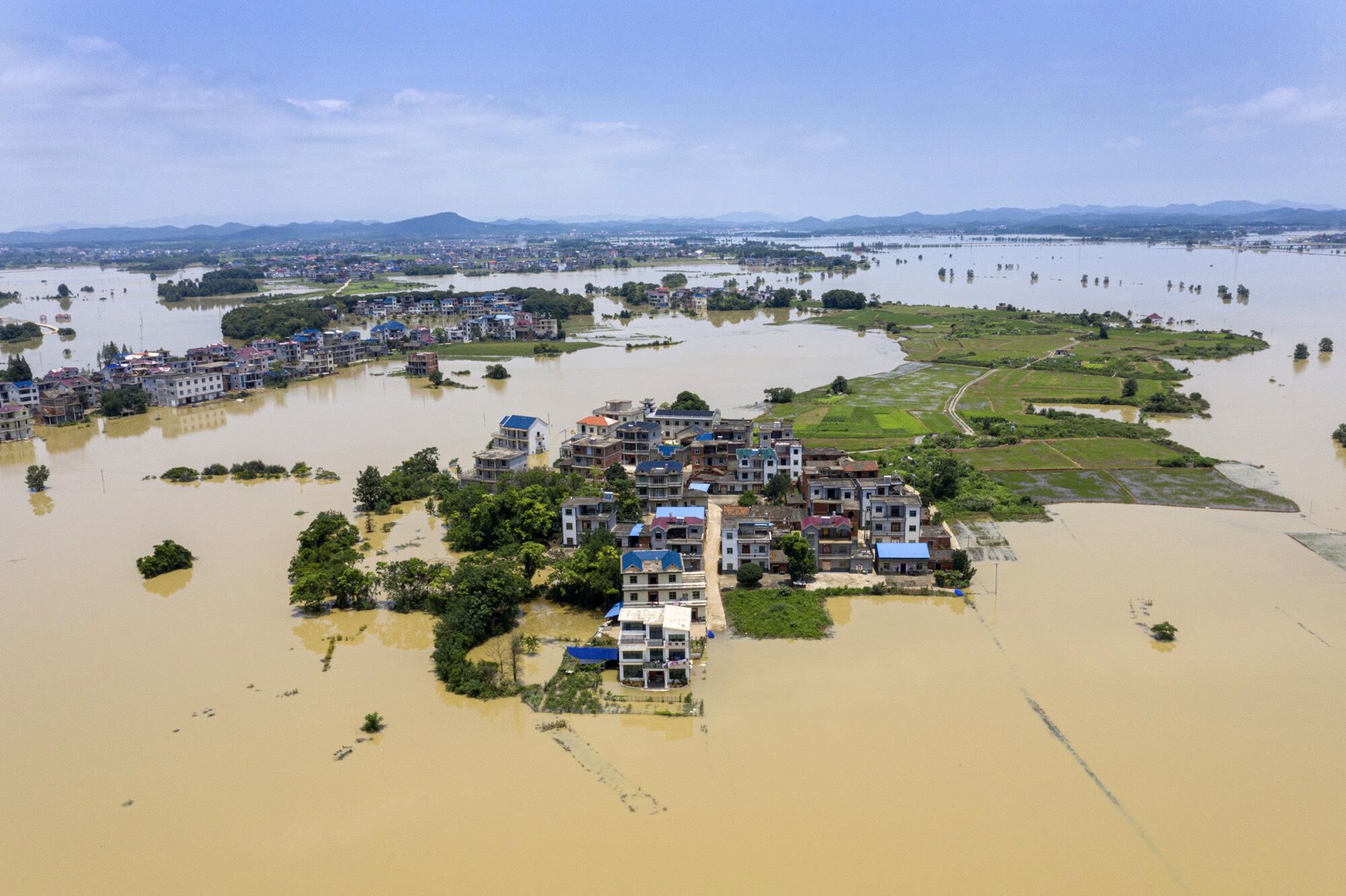
Unlike his farmer neighbors, Cheng had little food stocked at home. He rowed a white plastic boat the size of a bathtub on daily three-hour round trips to the closest solid land to get drinking water and supplies.
“We’re trying to think of ways to buy vegetables,” Cheng said. They had not received any relief or contact from any government officials. They did not leave, he added, because they had nowhere else to go.
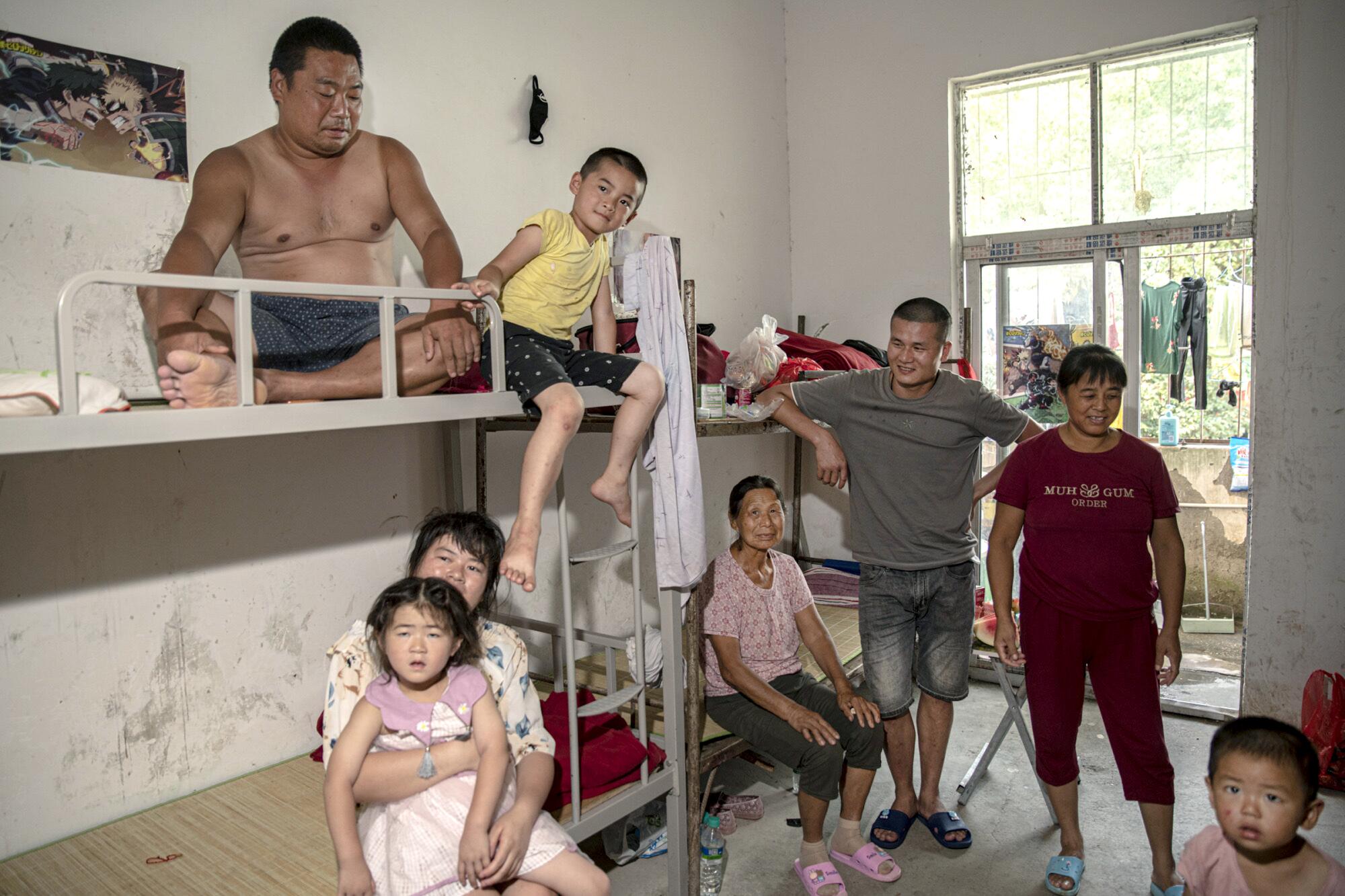
Residents of some other villages have been evacuated by their local governments and given shelter in middle schools. In one dormitory room, five single grandmothers sat on metal bunk beds, exchanging stories of how quickly the water rose. In another, members of a family surnamed Huang sliced watermelon as their children sprawled asleep, exhausted.
In 1998, those who were displaced recalled, the water refused to drain for 90 days. This time, the flood was even worse, and another round of storms was expected soon. It would probably be at least four months before they could return home. But what if this middle school shelter flooded in the next storm? Where would they go?
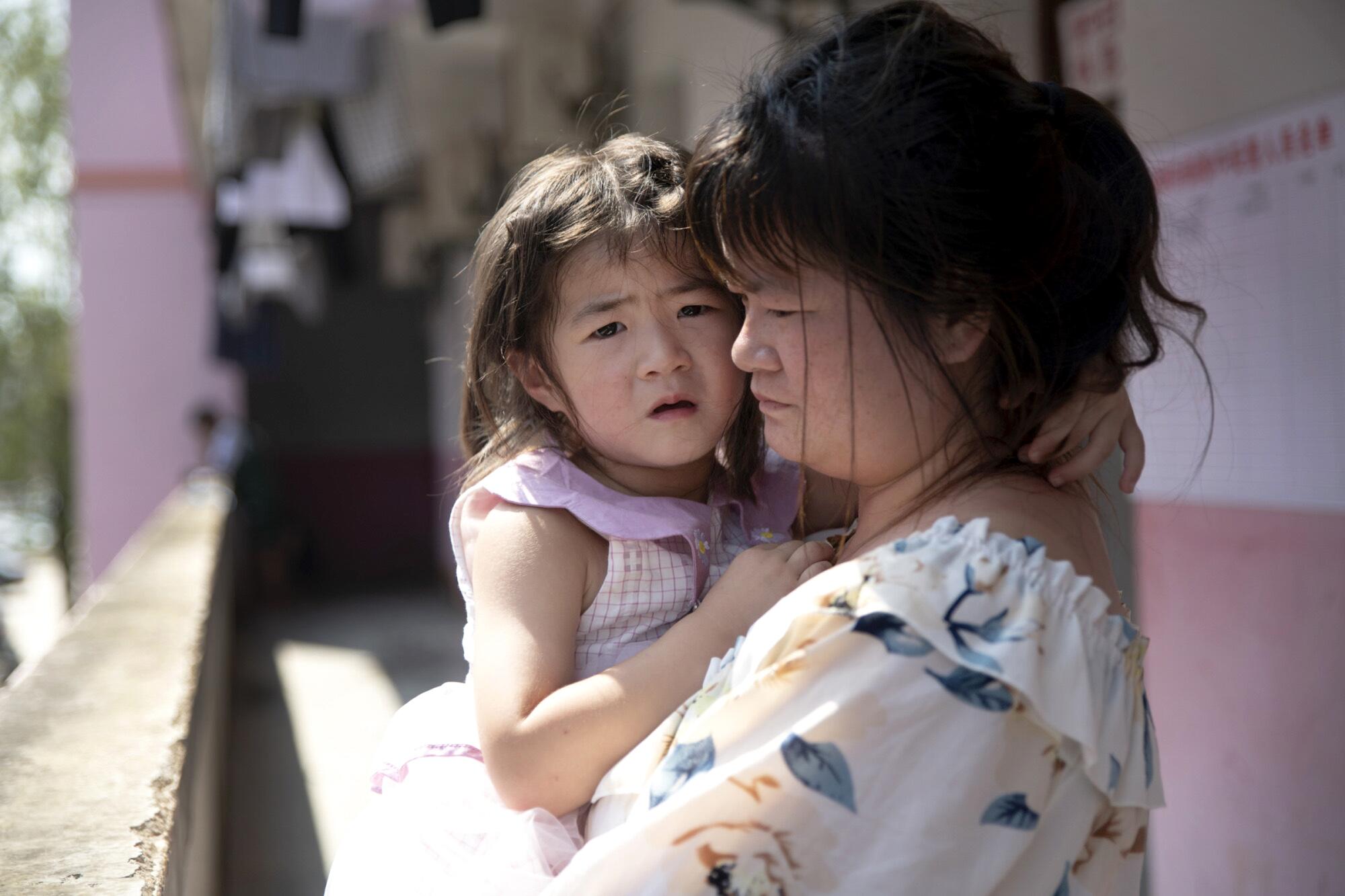
As night fell, some villagers crossed a bridge toward their homes, loading boats to catch fish, to bring supplies home or to stand guard against thieves who’d already stolen several families’ air conditioners. A chorus of crickets sang out as people sloshed buckets of water out their windows.
The tinny sound of cellphone music wafted from the bridge, where a shirtless farmer wedged a plastic chair against the railing and leaned back, feeling the night breeze. Others chatted, gathering at the abrupt end of a road where the embankment had collapsed and four houses dropped into the river. Only one remained visible, the 45-degree miracle with the blue roof and balcony.
“That’s the best house in China,” joked Huang Guoxin, 51, lighting a cigarette as darkness fell. He’d watched as the other houses fell apart, he said, dissolving as if they were made of sugar. This one was lopsided and half-drowned, but its shape was perfect, he said. “It’s not even missing a single roof tile.”
Huang, a migrant worker who did renovation jobs in Zhejiang, lived three doors down from that tilted house. There probably should not be houses on top of the embankment at all, he said. “But if you pay the officials, they will approve any house. And if you don’t pay them, they will always say it’s in violation,” he said.
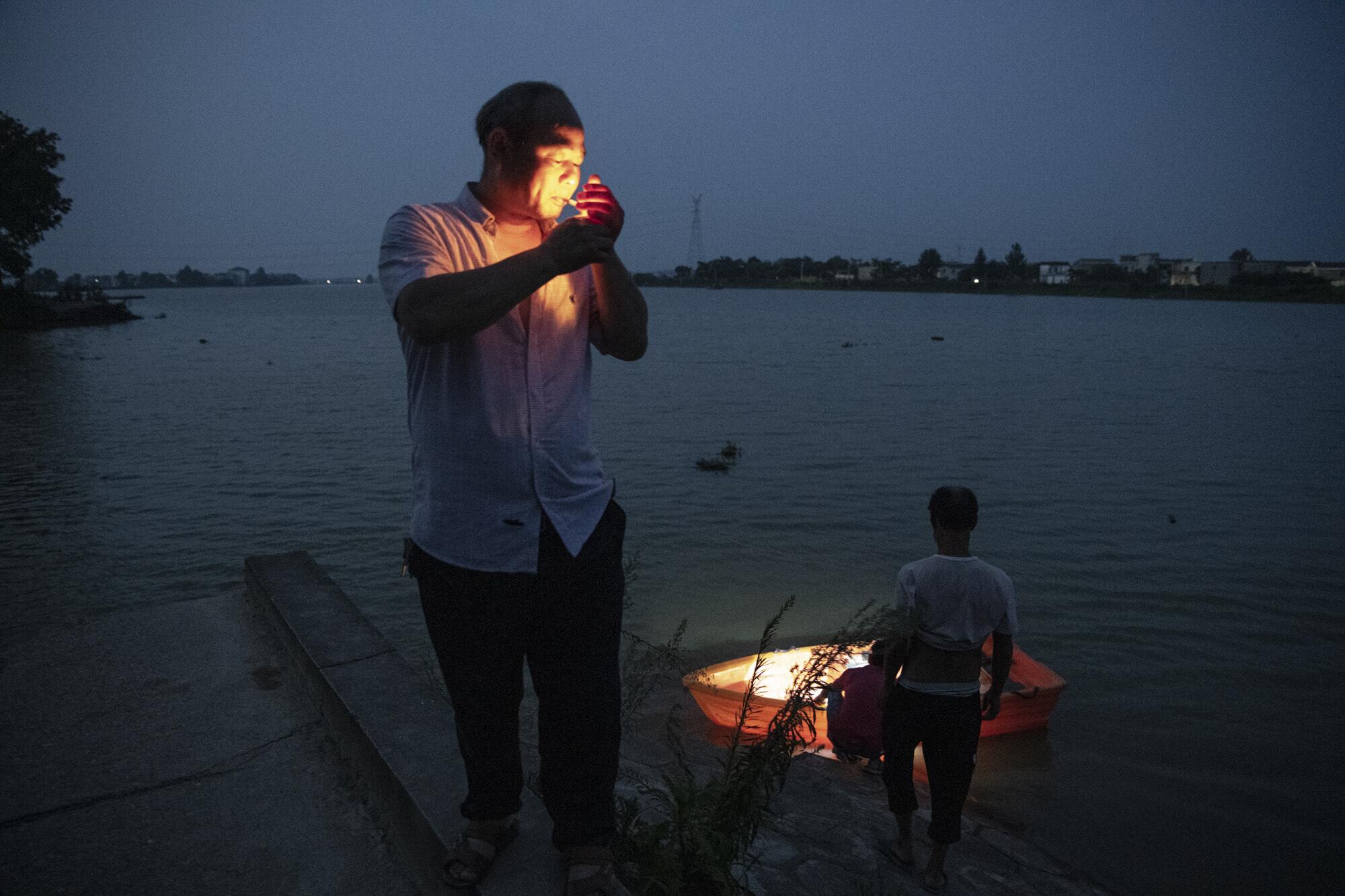
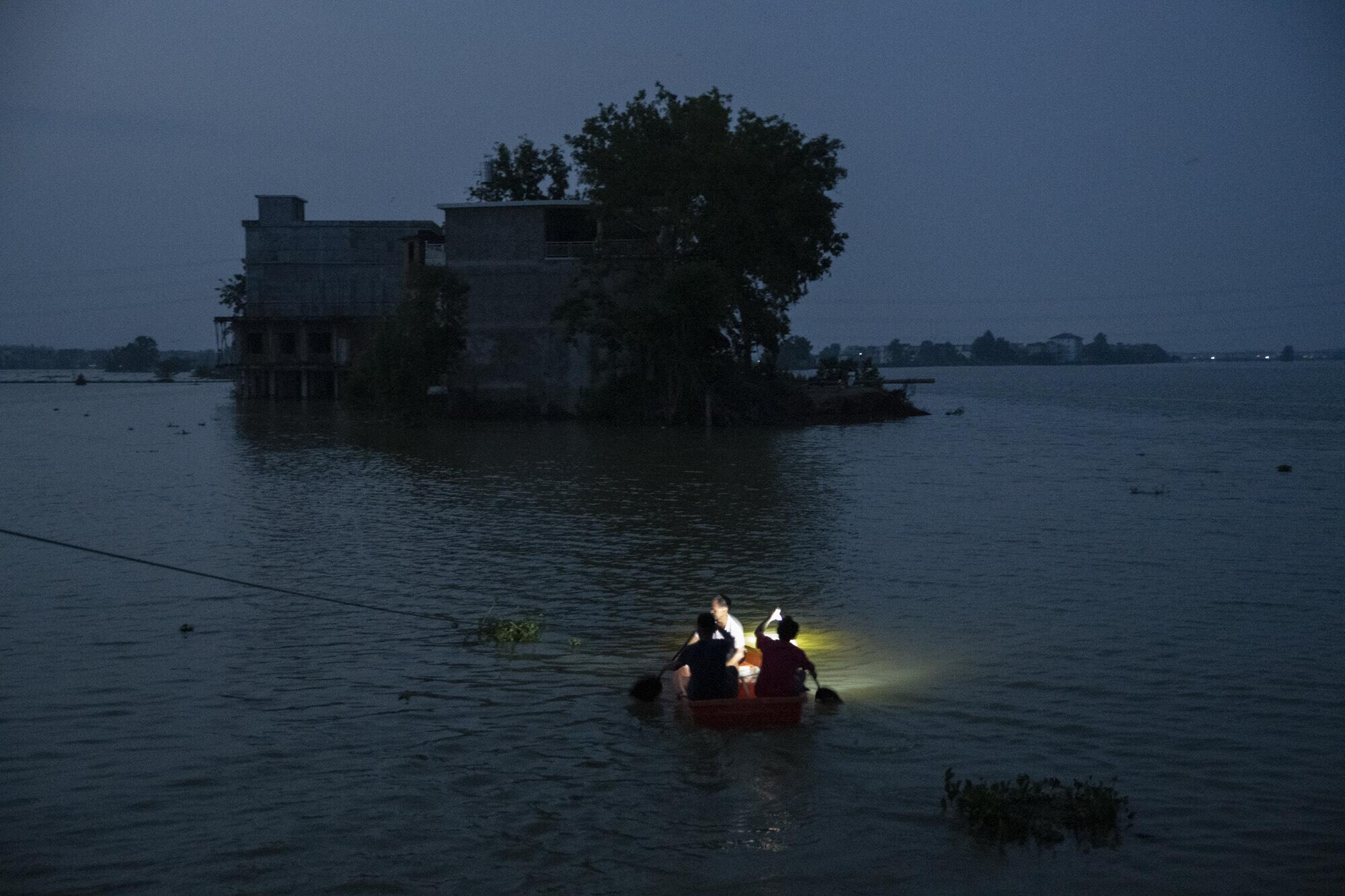
Huang had evacuated to the school, he said, afraid that the rest of the ground here could be buried in water. But he still came back, partly to check on his home, partly because he couldn’t sleep on those metal bunk beds in the shelter.
“It’s not that it’s uncomfortable. You just feel this pressure in your heart,” he said: how easily a life’s work washes away, only for you to rebuild, then to watch it wash away again.
More to Read
Sign up for Essential California
The most important California stories and recommendations in your inbox every morning.
You may occasionally receive promotional content from the Los Angeles Times.

